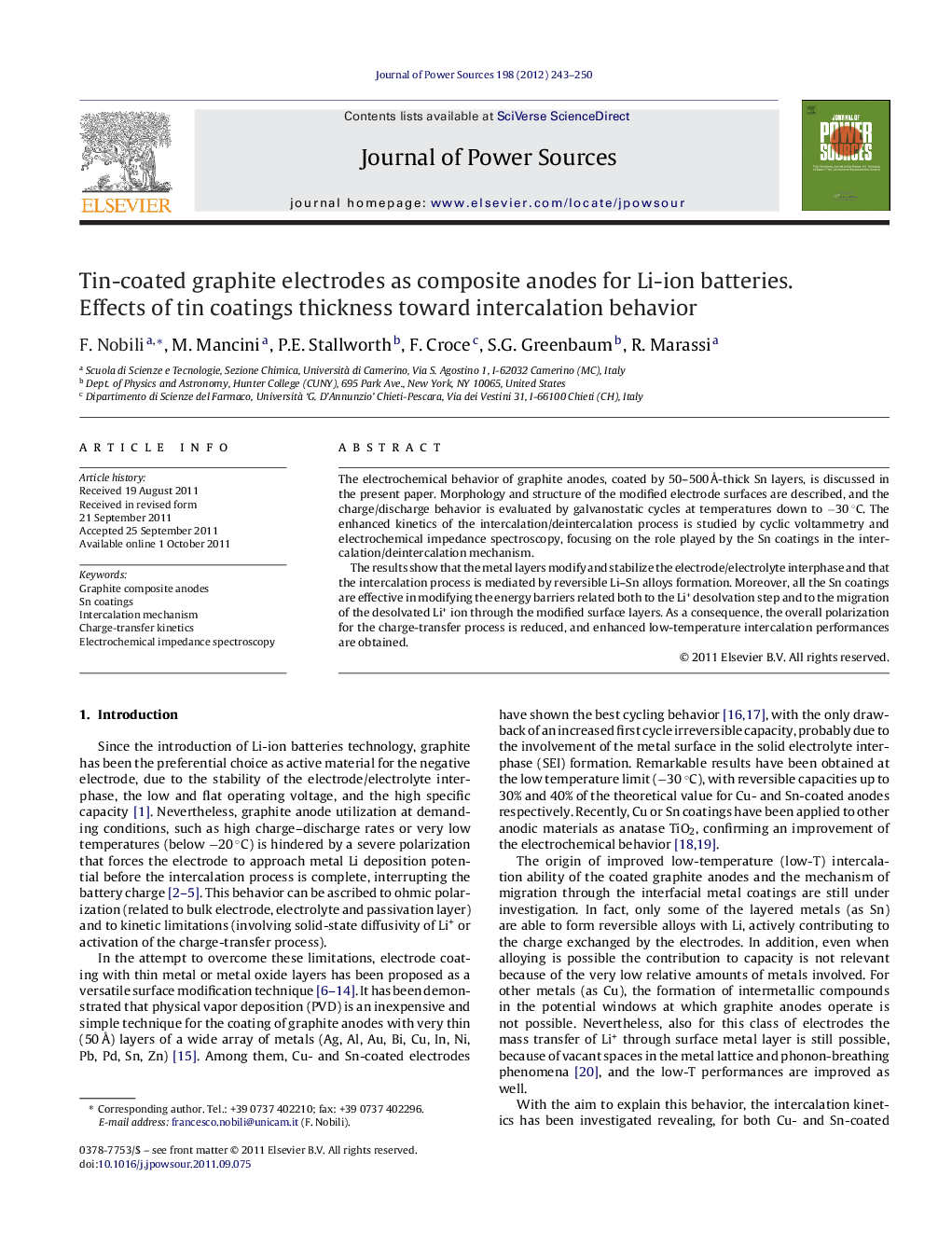| Article ID | Journal | Published Year | Pages | File Type |
|---|---|---|---|---|
| 1288417 | Journal of Power Sources | 2012 | 8 Pages |
The electrochemical behavior of graphite anodes, coated by 50–500 Å-thick Sn layers, is discussed in the present paper. Morphology and structure of the modified electrode surfaces are described, and the charge/discharge behavior is evaluated by galvanostatic cycles at temperatures down to −30 °C. The enhanced kinetics of the intercalation/deintercalation process is studied by cyclic voltammetry and electrochemical impedance spectroscopy, focusing on the role played by the Sn coatings in the intercalation/deintercalation mechanism.The results show that the metal layers modify and stabilize the electrode/electrolyte interphase and that the intercalation process is mediated by reversible Li–Sn alloys formation. Moreover, all the Sn coatings are effective in modifying the energy barriers related both to the Li+ desolvation step and to the migration of the desolvated Li+ ion through the modified surface layers. As a consequence, the overall polarization for the charge-transfer process is reduced, and enhanced low-temperature intercalation performances are obtained.
► Graphite anodes are coated with Sn layers of different thicknesses. ► Morphology and chemistry of electrode surface are described by SEM and NMR. ► Sn layers enhance intercalation performances at low temperatures. ► Intercalation is mediated by reversible Li–Sn alloying. ► Intercalation kinetics is characterized by CV and EIS.
